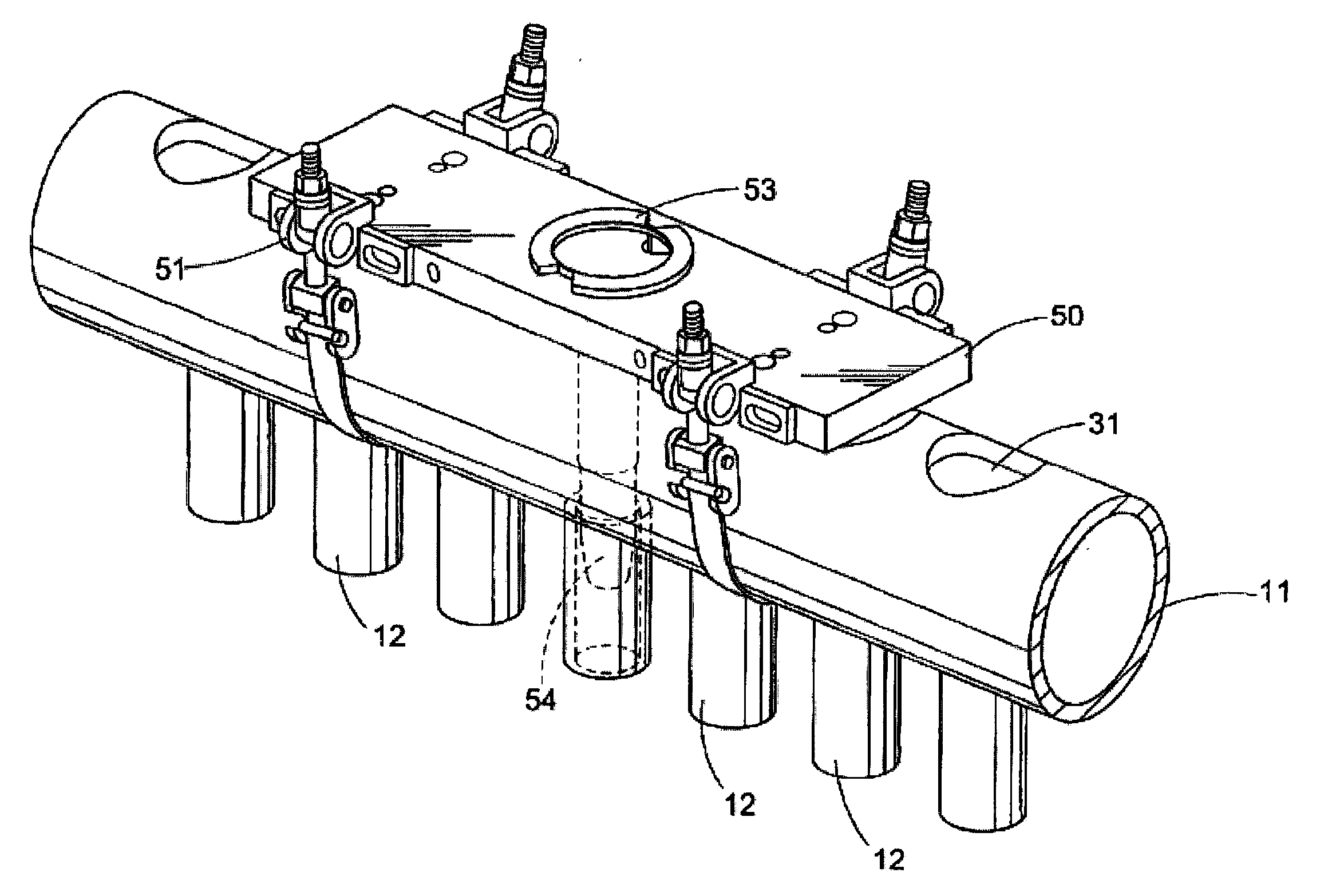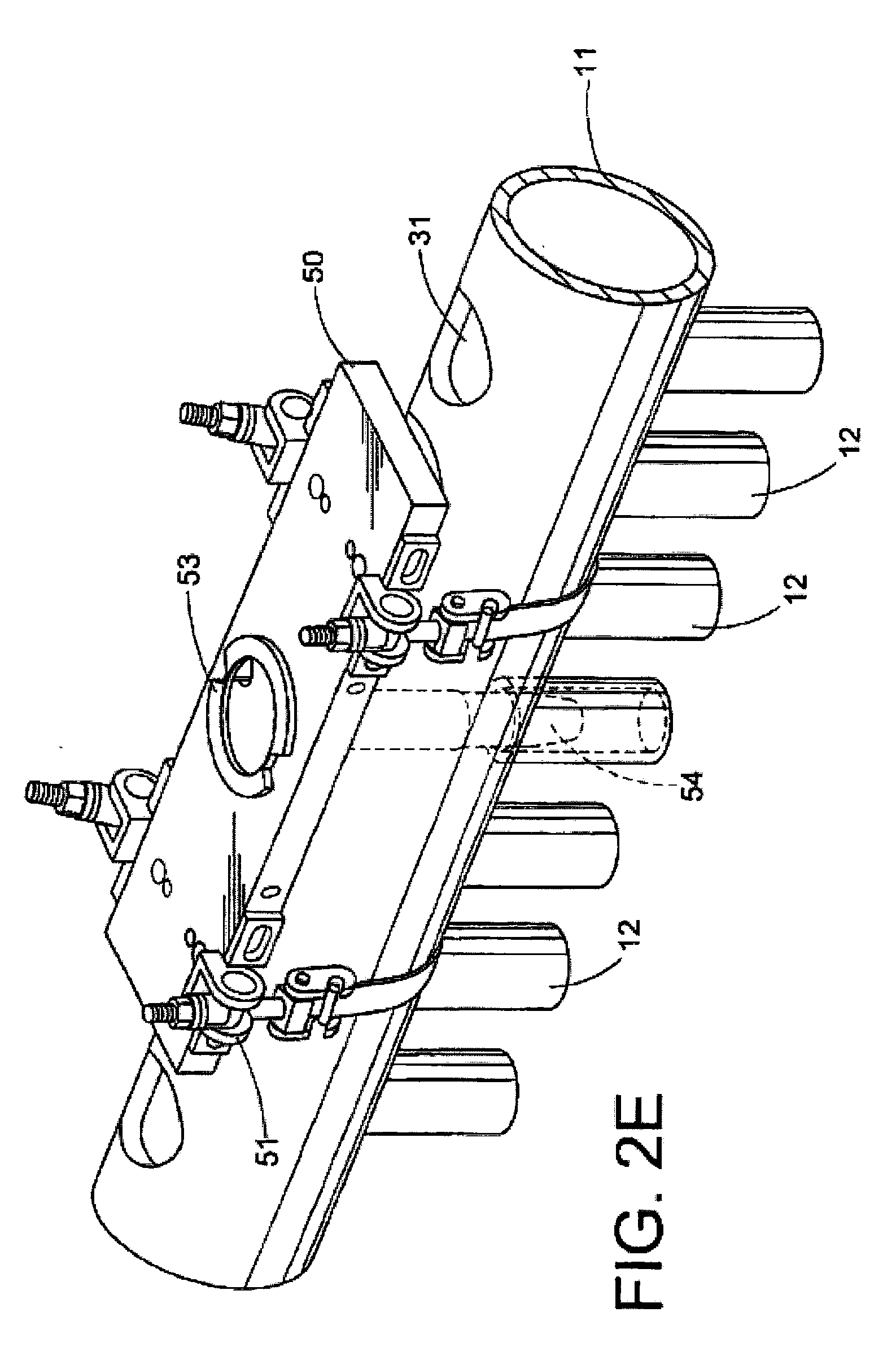Method for repairing heat recovery steam generator tube-to-header damage
a heat recovery steam generator and head-to-header technology, which is applied in the direction of electrical wiring devices, lighting and heating apparatus, soldering apparatus, etc., can solve the problems of thermal fatigue failure at the toe of the tube weld, life limiting factors of many heat recovery steam generators, and difficulty in repairing heat exchanger tubes and head-to-header damage, etc., to reduce the number of welds and the time required
- Summary
- Abstract
- Description
- Claims
- Application Information
AI Technical Summary
Benefits of technology
Problems solved by technology
Method used
Image
Examples
Embodiment Construction
[0031]The present method provides a more pragmatic approach to address HRSG header-to-tube attachment damage than is currently used by industry today. This form of repair is often more difficult than conventional tube repairs due to limited access to the damage location. As a result, tube and header to tube attachment failures are often left in place and simply plugged. FIG. I illustrates a plug weld configuration. Plugging requires removal of an access window within the header 11 one hundred eighty (180) degrees away from the stub tube 12 attachment location, machining and insertion of a plug 13 into the damaged tube bore, welding of the plug into place, and then re-installation of the window.
[0032]Repair methodology is complicated by the number of different attachment configurations used by industry. Header to tube attachment weld designs used by original equipment manufacturers (OEMs) include:
[0033]a) partial penetration welds 14 (shown in FIG. 2A);
[0034]b) fall penetration welds...
PUM
| Property | Measurement | Unit |
|---|---|---|
| diameter | aaaaa | aaaaa |
| outer diameter | aaaaa | aaaaa |
| diameter | aaaaa | aaaaa |
Abstract
Description
Claims
Application Information
 Login to View More
Login to View More - R&D
- Intellectual Property
- Life Sciences
- Materials
- Tech Scout
- Unparalleled Data Quality
- Higher Quality Content
- 60% Fewer Hallucinations
Browse by: Latest US Patents, China's latest patents, Technical Efficacy Thesaurus, Application Domain, Technology Topic, Popular Technical Reports.
© 2025 PatSnap. All rights reserved.Legal|Privacy policy|Modern Slavery Act Transparency Statement|Sitemap|About US| Contact US: help@patsnap.com



